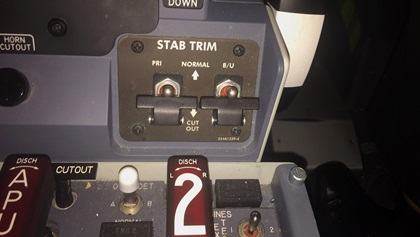Boeing's crisis: AOPA safety expert weighs in
“If it ain’t Boeing, I’m not going.” This proud maxim propagates within the professional pilot community, reflecting appreciation for the fundamental design principle at the core of Boeing’s airplanes: The pilot is the ultimate and final authority in aircraft control.
This guiding principle is a critical distinction between Boeing and Airbus airplanes and reflects why pilots who’ve flown both overwhelmingly favor Boeing aircraft. When the Lion Air crash of a Boeing 737 MAX 8 revealed the existence of a flight control system operating in the background, which Boeing and the FAA had not revealed when the MAX 8 was introduced, pilots felt betrayed, as if Boeing had secretly abandoned its guiding design principle and lost faith in pilot skills. In actuality, Boeing’s trust in pilot skills likely buoyed a system design and roll-out strategy that appears to be at the root of two recent MAX 8 crashes. Boeing’s critical mistake may be in assuming a worldwide standard of pilot competency that doesn’t exist.
Boeing and the FAA agreed that the MCAS was not a significant enough modification to require additional training for pilots, which would be expensive for Boeing and its customer air carriers, and create mountains more paperwork for the FAA. Boeing and the FAA believed that any malfunction of the MCAS would reveal as a typical stabilizer trim malfunction, for which extensive documentation, procedures, and training already existed. Essentially, Boeing and the FAA thought pilots didn’t need to know there was a new function, deep in the software that activates for aircraft control, since in the event of any anomaly, pilots would recognize an automatic stabilizer trim problem and handle it with established procedures. When U.S. pilot groups were made aware of the MCAS system and briefed extensively on it after the Lion Air Crash, they concurred that no additional procedure training was needed.

If the Lion Air and Ethiopian Airlines investigations confirm an MCAS malfunction triggered the accidents, they will also likely confirm that the pilots could have regained control of the aircraft by disabling the stabilizer trim with the console cutout switches. Utilizing the console cutout switches to handle stabilizer trim anomalies is the same procedure in place for the 737 aircraft prior to the MAX 8 variant. Recognition of stabilizer trim malfunction and reaction by using console cutout switches is the pilot response Boeing and the FAA expected. Flight path analysis in both the Lion and Ethiopian accidents indicates those pilots were likely attempting to bypass the stabilizer trim with the yoke-mounted trim disable switches and/or the control column cutout switches. The problem is, the control column cutout switches are deactivated by MCAS operation and the yoke-mounted switches only provide temporary MCAS bypass. The MCAS re-engages, with more exaggerated input, when the yoke switch is released, which would create the exaggerated and erratic pitch oscillations noted in both MAX 8 crashes.
What must be acknowledged in the ongoing MAX 8 accident investigations and follow-on analysis of Boeing and FAA conduct, is that U.S. air carriers have flown more than 50,000 flights and logged more than 100,000 hours in the Boeing MAX 8 without a mishap. If there is a problem with the MAX 8’s MCAS, it's unlikely that U.S. carriers have just been lucky not to experience it. More likely, an anomaly occurred, was handled by experienced, well-trained aircrew, and then addressed by highly qualified maintenance technicians on the ground.
It may not be a coincidence that both MAX 8 accidents occurred in less-developed regions of the world where aviation is not as advanced. The Ethiopian Airlines crew included a 29-year-old captain and a 25-year-old first officer, both light in experience compared to U.S. aircrew averages. Pilot training, cockpit culture, and aircraft maintenance procedures have been refined to an exceptional level over decades in the United States, as the safety record reflects. The aviation ecosystem in the United States requires regulators, accident investigators, pilots, airlines, and aircraft builders to cooperate for success. Governance includes objective mishap investigators who produce candid public reports often casting blame that make elements of the ecosystem squirm, and respond swiftly, when they fall short.
Boeing’s grave oversight may have been not recognizing global distinctions in aviation cultures, specifically in pilot skill and training. The subtle skill and crew coordination competencies, unrecognizable under normal operations, but conspicuous in crisis, may well prove to be the difference between a system anomaly expertly handled and catastrophic crashes resulting in 346 deaths.
Investigations are ongoing and could take a different turn, but for now, it appears the Ethiopian and Lion Air crashes may reinforce that pilot skill matters.




